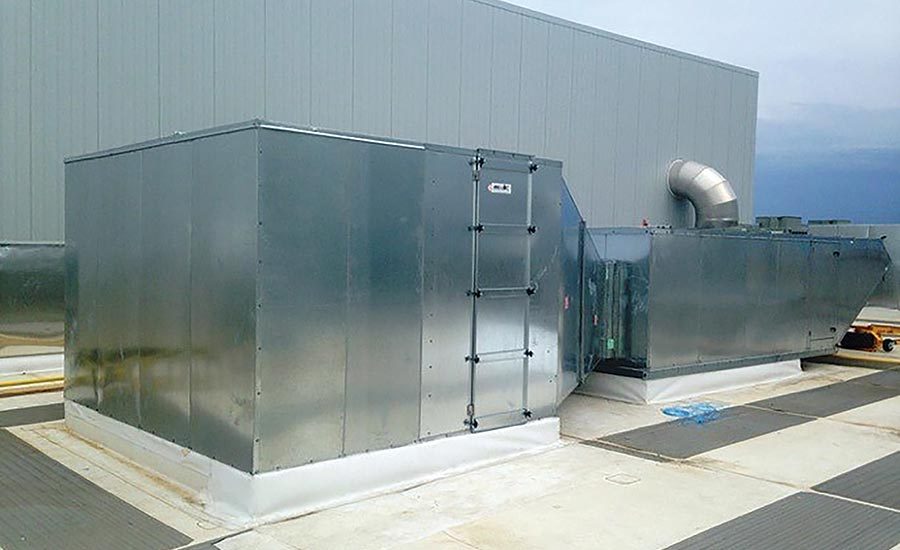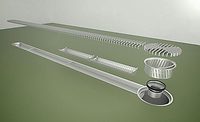Snack and bakery facilities revamp ventilation systems to address common issues
Snack and bakery operators need right air-handling equipment design to keep production environments safe.

courtesy of Air Management Technologies

courtesy of Camfil

courtesy of Controlled Environment Equipment Corp.

courtesy of Camfil




Snack and bakery companies frequently need to design and outfit their facilities with ventilation systems to address issues like food and worker safety and avoid cross-contamination.
Manufacturers of air-handling equipment and designers of plant-filtration systems recommend that snack and bakery operators carry out rigorous risk assessments and examine issues like the proper filters, the necessary separations between certain areas of the facility, and the optimal air velocity and sourcing, which sometimes leads to the decision to pressurize.
Best practices
Given differences in air quality standards among the U.S. and other industrialized countries in Europe and Asia—and even differences among states and localities in the U.S.—customers need to self-govern and carry out their own risk assessments based on their individual product mix and location, says Ross Dumigan, food and beverage segment manager, continental Europe and the British Isles, Camfil, Stockholm, Sweden.
Customers need to think of their air as an ingredient in the food they produce, Dumigan says. “They need standards to handle indoor air quality and openness toward education. Unless people know what’s in their air, how can they remove it and protect people, processes and customers? Otherwise, we’re going to continue to see Legionnaires’ disease and Salmonella. This is something that shouldn’t be happening in this day and age.”
Controlled Environment Equipment (CEE) Corp., North Prairie, WI, has several recommendations for snack and bakery customers. They need a discharge filter to ensure that Salmonella is properly expelled, at least 20-feet-per-minute air speed, 6 to 12 air changes per hour, and the removal of duct work, says Sandy Campbell, president.
“They’re beginning to realize they can’t bring in air and recirculate it,” Campbell says. Bringing in 100 percent outside air is more costly, he says, but it takes out the contaminants.
The industry is starting to realize that they need pressurized facilities to keep out molds, as well as insects and other particulate matter, says Scott Houtz, president of Air Management Technologies, Inc., Lewisburg, PA. “A lot of that has been driven by numerous studies by different baking companies that show by keeping your buildings pressurized, you limit mold. That requires bringing in outside air to make up for the loss, as ovens, coolers and fryers exhaust air out of your facilities.”
New equipment and designs
To handle these various challenges, Camfil has been focusing in recent months on continuously developing new and more-energy-efficient filtration products to meet new standards in the U.S. and elsewhere, as well as educating their market about those new standards, Dumigan says.
“We’ve had a mixture of standards,” says Dumigan. “That was never going to be an ideal situation for people to understand the benefits of different kinds of filters and the protections they offer. The new standards are leading the drive toward production innovations.”
Camfil also has been continuously improving its “plug and play” air purifier systems to filter the air in a specific part of a plant, which “can create positive, negative or neutral pressure within a given area,” Dumigan says. “That’s the main focus of development at the moment for new products.” The company will be releasing new products in this area later this year. “We’ve got some real game-changers.”
CEE Corp. helps snack and bakery clients save money and energy through implementation of cascading air systems that push the same air through as many as four rooms, removing the need to produce “makeup air” after exhausting air into the same room from which it originated, Campbell says. This saved one client as much as $80,000.
The company also helps its customers design plants with pressurized airlocks that keep dirty and clean areas of the plant completely separate. “We pump air into that airlock, and then they have to open one door, come in and close the second door,” Campbell says. “That keeps the contaminants from traveling from one area to the other, from kill to non-kill.”
Removing duct work from plants solves two problems at once, because ducts can be a place for contaminants like Salmonella to breed, and because the top surface of the ducts is a regular source of dust raining down on people and products below, says Campbell. “I take out all the duct work and go with fans from room to room to move the air.”
Air Management Technologies encourages positive pressurization to help protect snack and bakery products in a cost-effective manner, isolating segmented areas as needed kill zones and focusing the bulk of efforts on areas where product is going to be exposed, rather than needing to span efforts across an entire facility, Houtz says.
“When the product is coming out of an oven or fryer, you can imagine that is a kill zone—no molds can survive, normally, 150°F,” says Houtz. Then the finished products need to cool for an application-specific time interval. “It’s during that process where the product is very vulnerable to having molds deposited on it.”
Air Management Technologies has developed a spiral conditioning system that uses an enclosed spiral cooler with insulated metal panels that handles high-efficiency filtration, removing 95 percent of mold spores and protecting product from a significant concentration of contact. “When it leaves the cooler, you have less than a minute until it hits the packaging,” Houtz says. “If you’re maintaining good conditions during cooling—in terms of temperature, humidity, pressure—you can pretty much predict the results, whether it’s January or July.”
As a company from a building HVAC background that transferred that knowledge into the food industry, Air Management Technologies works to continuously enhance snack and bakery air-handling processes, notes Houtz. “Most food processing facilities have poor ventilation. With older buildings, people didn’t think about it. They used exhaust fans, more or less, and there wasn’t much thought given—it was just, ‘We’re hot in this corner, let’s throw in an exhaust fan.’”
In order to maintain peak food safety, today’s snack and bakery facilities need a much more dedicated and analytical approach toward air management.
Looking for a reprint of this article?
From high-res PDFs to custom plaques, order your copy today!










